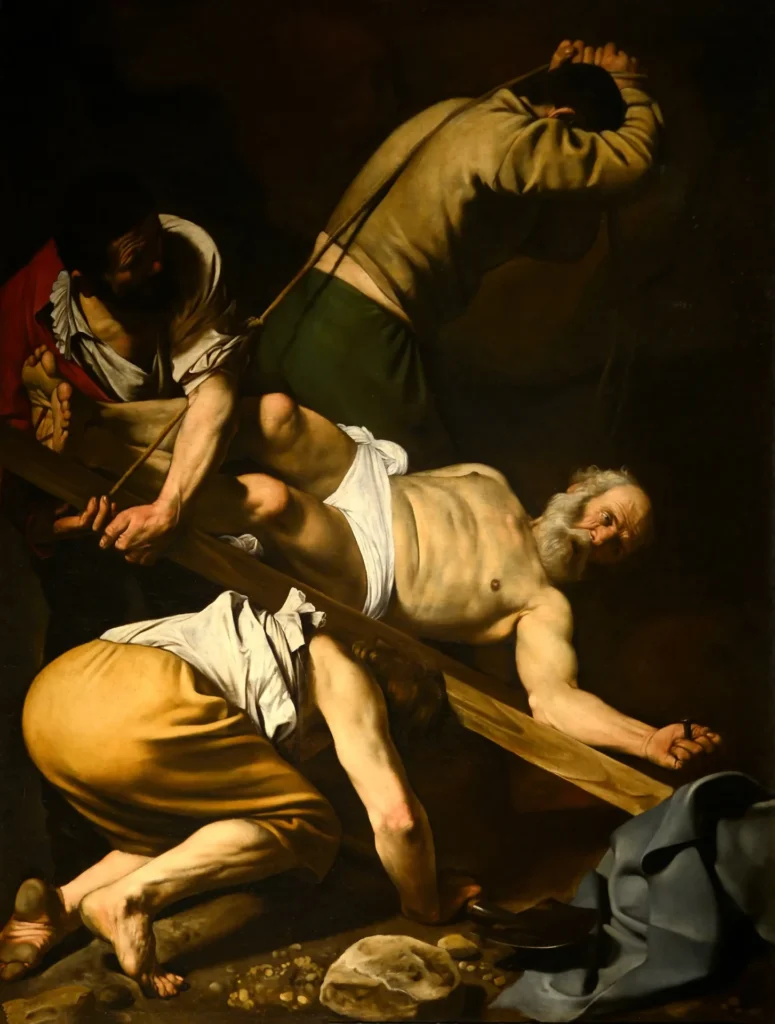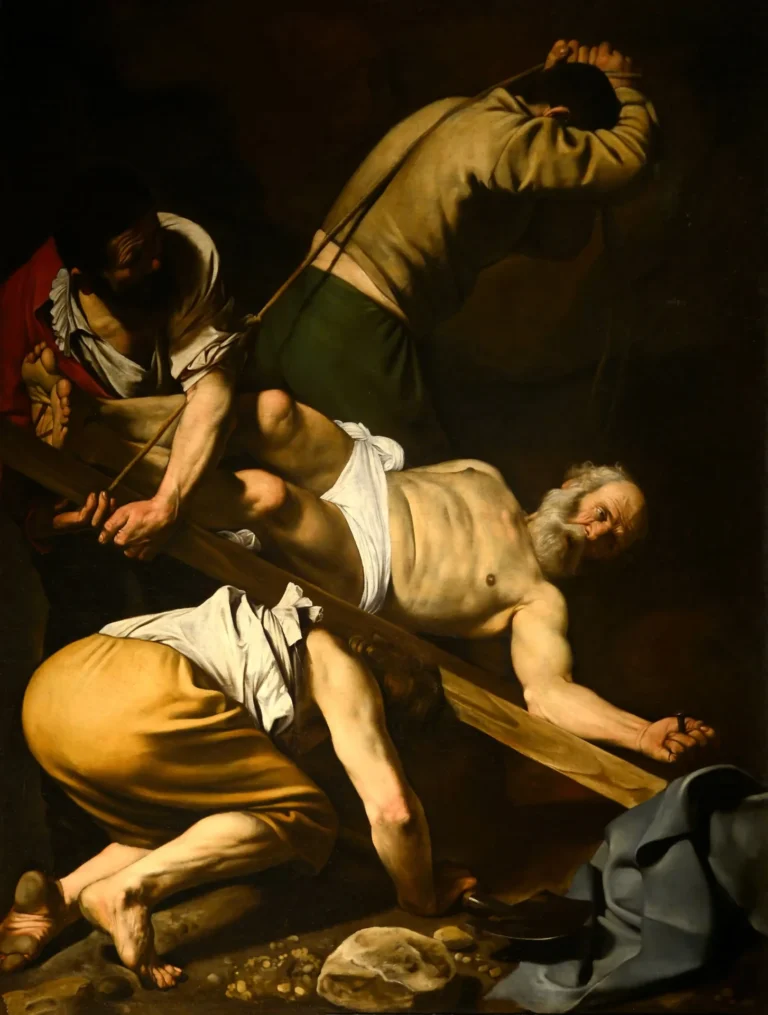Crucifixion of Saint Peter (1600)
Created by the renowned Italian Baroque artist Caravaggio around 1600-1601, 'The Crucifixion of Saint Peter' is a powerful portrayal of martyrdom that captures the raw human emotion and intense suffering of its subject. Depicting Saint Peter crucified upside down, as he requested to distinguish his death from Jesus Christ, the painting employs dramatic chiaroscuro to heighten the emotional and thematic depth. Its realistic execution and poignant themes contribute to its significance in the Baroque era and in religious art more broadly.
1600 - 1601
About the Artwork
Commissioned by Tiberio Cerasi for the Cerasi Chapel in Rome, this artwork marks an important moment in Caravaggio's career, showcasing his unique blend of realism and dramatic narrative. The historical context of the commission reflects the Counter-Reformation's emphasis on personal piety and the emotional engagement of the viewer with sacred subjects. The choice of portraying Saint Peter in such a brutal moment of his martyrdom emphasizes themes of faith, sacrifice, and the human experience of suffering, which resonated deeply with audiences of the time. Caravaggio's innovative approach, portraying ordinary figures as executioners, makes the scene relatable and contemporary, inviting viewers to connect with the narrative emotionally.
Did You Know
Legend has it that Saint Peter requested to be crucified upside down as he believed he was not worthy to die in the same way as Jesus Christ, his Lord.
Caravaggio is credited with mastering the chiaroscuro technique, which employs pronounced contrasts of light and shadow, becoming a hallmark of Baroque art that intensifies emotional resonance.
Unlike traditional representations of biblical figures, Caravaggio often depicted ordinary people in his works; in ‘The Crucifixion of Saint Peter,’ the executioners appear as common laborers, emphasizing the relatability of the narrative.










